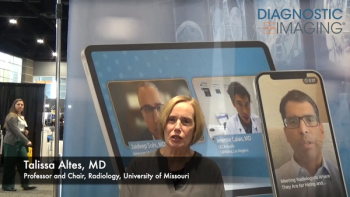
Ontology explores PACS integration
University researchers have constructed an ontology of radiological procedures to explore their impact on PACS integration.
University researchers have constructed an ontology of radiological procedures to explore their impact on PACS integration.
"Ontologies can simplify application development," said Dr. Charles E. Kahn of the division of informatics in the radiology department at Medical College of Wisconsin. "Work such as ours shows a way to build general knowledge about radiology into a model that could be used across a variety of computer systems."
The work, undertaken in response to the Transforming the Radiologic Interpretation Process (TRIP) initiative, is described in a recent paper (J Digit Imaging 2006 Jun 14; epub ahead of print).
Ontologies are relatively unfamiliar in radiology circles but common in biomedical research. Many biological databases use ontologies to describe their data and relate experimental results to biomedical knowledge.
"In general, ontologies have been valuable in knowledge-intensive and data-rich domains, attributes that certainly apply to radiology," Kahn said.
Kahn pointed out that most radiology systems are closed, use relational models or proprietary schemas, or have the application knowledge embedded in application code.
"Ontologies are beneficial because they are declarative and extensible, and they foster knowledge sharing and reuse," he said. "They can be used across radiology applications and provide consistent knowledge of the domain to diverse applications."
An ontology thus packages knowledge into a computable format, according to Kahn. Systems developers can decide how best to integrate that knowledge base into their products.
"The use of XML and other standards give them the flexibility to do so in any number of ways," he said.
In currently available PACS workstations, for example, the functionality demonstrated by his test scenarios would require custom software for each application, and future applications would be no easier to implement than the initial applications, Kahn said.
"An ontology model, on the other hand, would require a single software application," he said. "New applications could be created by extending the ontology's content, without necessarily requiring additional software."
Thus, an ontology provides an extensible foundation to create new applications and to cover broader radiology domains, he said.
"We have created and successfully applied an ontology of procedural knowledge of thoracic radiology that serves as a proof of concept for the use of ontologies to integrate PACS with enterprise information systems," Kahn said.
Kahn believes there are many other ways in which ontologies will prove useful in radiology initiatives, such as Integrating the Healthcare Enterprise, TRIP, and the RadLex project.
Newsletter
Stay at the forefront of radiology with the Diagnostic Imaging newsletter, delivering the latest news, clinical insights, and imaging advancements for today’s radiologists.




























